XRF Test Results for 1978 Sears, Roebuck and Co. Merry Mushroom Canister (Made in Mexico)
For those new to this website:
Tamara Rubin is a multiple-federal-award-winning independent advocate for childhood Lead poisoning prevention and consumer goods safety, and a documentary filmmaker. She is also a mother of Lead-poisoned children (two of her sons were acutely Lead-poisoned in 2005). Since 2009, Tamara has been using XRF technology (a scientific method used by the U.S. Consumer Product Safety Commission) to test consumer goods for toxicants (specifically heavy metals — including Lead, Cadmium, Mercury, Antimony, and Arsenic). All test results reported on this website are science-based, accurate, and replicable. Items are tested multiple times to confirm the test results for each component tested. Tamara’s work was featured in Consumer Reports Magazine in February of 2023 (March 2023 print edition).
Monday — July 31, 2023
If you are a long-time Lead Safe Mama reader and simply want to know if these are safe for use with food, the quick answer is no — they are not. The levels of Lead were very high (inside and out) and the glazes also tested positive for three other poisons (Arsenic, Cadmium, and Antimony), depending on the color of glaze tested.
I personally would not want to keep these in my home (especially if there are children in the home) as they might accidentally be used for food. If these have sentimental value for you, I encourage you to re-examine your relationship to this and similar objects. They are mass manufactured, highly-toxic items — not unique, original works of art. Your grandmother would not want you to risk poisoning your family by using her old things, things made long before modern regulatory standards were in place — I promise! (A better, safer keepsake as a memory of your loved one might be a quilt they made or a piece of art they created!) If you still must keep this in your home, please keep it in a locked curio cabinet where a child cannot interact with it.
For those who may be new here and seeking additional information:
The amount of Lead considered unsafe (and illegal) in the paint, glaze, or coating of newly manufactured items (post-2008) intended for use by children is anything over 90 ppm Lead. Lead in the glaze of dishware (and things like cookie jars) is not regulated because those items are not considered to be intended for children’s use.
This item tested positive for Lead in the glaze at levels of more than 20,000 ppm, which is incredibly unsafe, especially for an item intended for food use. The high reading was also for the white interior of the canister. If this canister were used for storing something like sugar or ground coffee (each of which is, by nature, abrasive) there is a real poisoning risk to the user due to wear on the highly-Leaded interior glaze of the canister.
If you have been using a canister like this (the same design or similar, from the same era) for food-use purposes (especially if it has been in daily use — like sugar in your coffee), we highly recommend asking your doctor about getting a blood Lead level test. Here’s a link with more information about Blood Lead testing.
Reading #1) White Glazed Areas (similar readings inside and out)
60-Second Reading
- Lead (Pb): 21,200 +/- 400 ppm
- Cadmium (Cd): 52 +/- 7 ppm
- Tin (Sn): Non-Detect
- Mercury (Hg): Non-Detect
- Selenium (Se): Non-Detect
- Barium (Ba): Non-Detect
- Chromium (Cr): Non-Detect
- Antimony (Sb): Non-Detect
- Zinc (Zn): 1,366 +/- 62 ppm
- Zirconium (Zr): 645 +/- 22 ppm
- Indium (In): 14 +/- 8 ppm
- Iron (Fe): 1,971 +/- 164 ppm
- Platinum (Pt): 216 +/- 77 ppm
- No other metals were detected in consumer goods mode.
Reading #2) Brown Glaze on lid
60-Second Reading
- Lead (Pb): 6,419 +/- 140 ppm
- Cadmium (Cd): Non-Detect
- Tin (Sn): Non-Detect
- Mercury (Hg): Non-Detect
- Selenium (Se): Non-Detect
- Barium (Ba): 1,477 +/- 234 ppm
- Arsenic (As): 298 +/- 75 ppm
- Chromium (Cr): Non-Detect
- Antimony (Sb): 113 +/- 47 ppm
- Zinc (Zn): 334 +/- 26 ppm
- Zirconium (Zr): Non-Detect
- Indium (In): Non-Detect
- Iron (Fe): 13,200 +/- 300 ppm
- Bismuth (Bi): 106 +/- 38 ppm
- Platinum (Pt): Non-Detect
- No other metals were detected in consumer goods mode.
Reading #3) Orange Glaze on lid
60-Second Reading
- Lead (Pb): 20,200 +/- 400 ppm
- Cadmium (Cd): 1,021 +/- 36 ppm
- Tin (Sn): Non-Detect
- Mercury (Hg): Non-Detect
- Selenium (Se): Non-Detect
- Barium (Ba): 1,504 +/- 68 ppm
- Chromium (Cr): 636 +/- 299 ppm
- Antimony (Sb): Non-Detect
- Nickel (Ni): 101 +/- 55 ppm
- Zinc (Zn): 17,700 +/- 400 ppm
- Manganese (Mn): 425 +/- 173 ppm
- Titanium (Ti): 9,323 +/- 1,500 ppm
- Zirconium (Zr): 347 +/- 16 ppm
- Indium (In): Non-Detect
- Iron (Fe): 2,093 +/- 165 ppm
- Vanadium (V): 3,866 +/- 813 ppm
- Platinum (Pt): 273 +/- 93 ppm
- Cobalt (Co): 400 +/- 74 ppm
- No other metals were detected in consumer goods mode.
~ End ~
Never Miss an Important Article Again!
Join our Email List








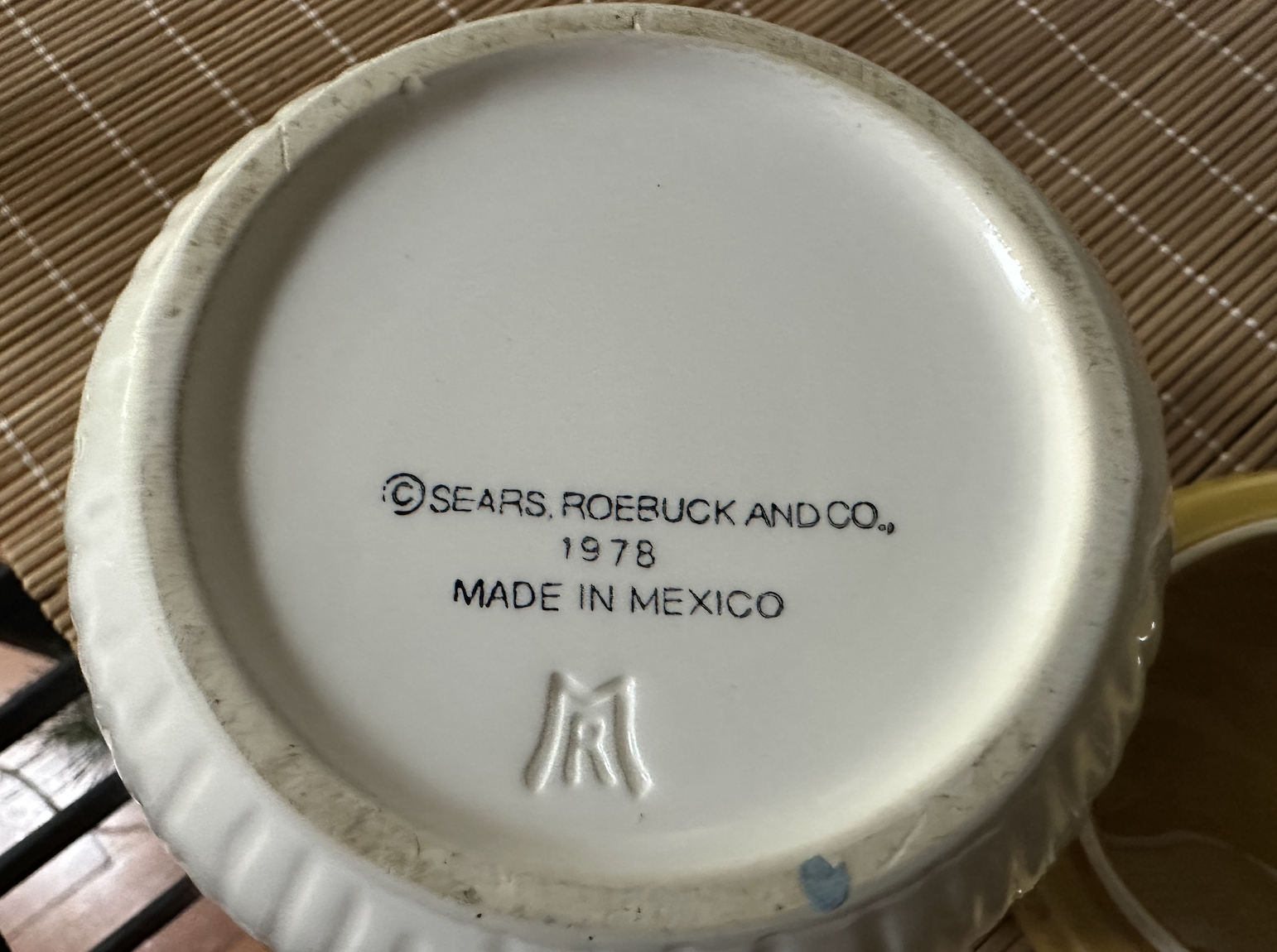
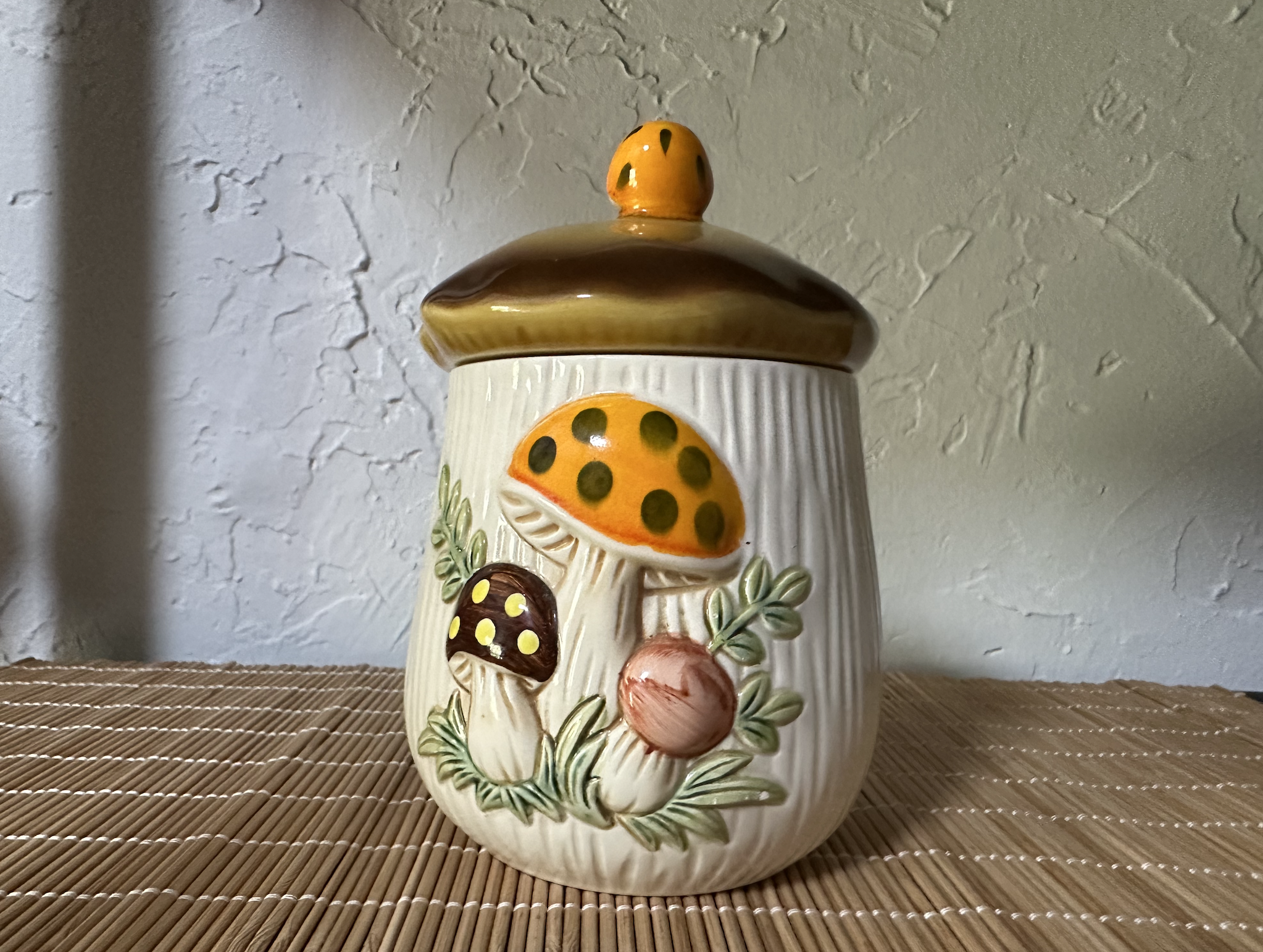
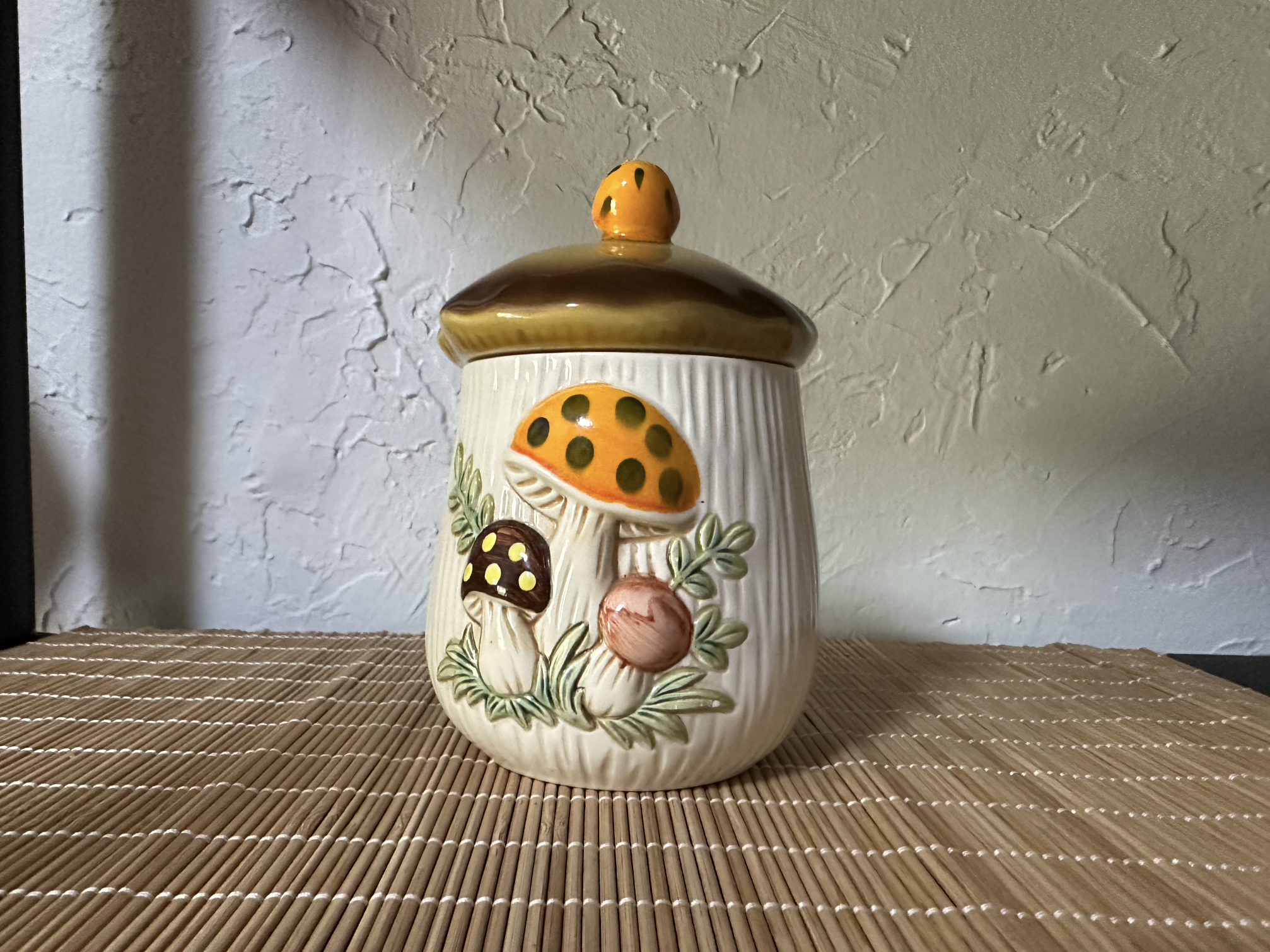
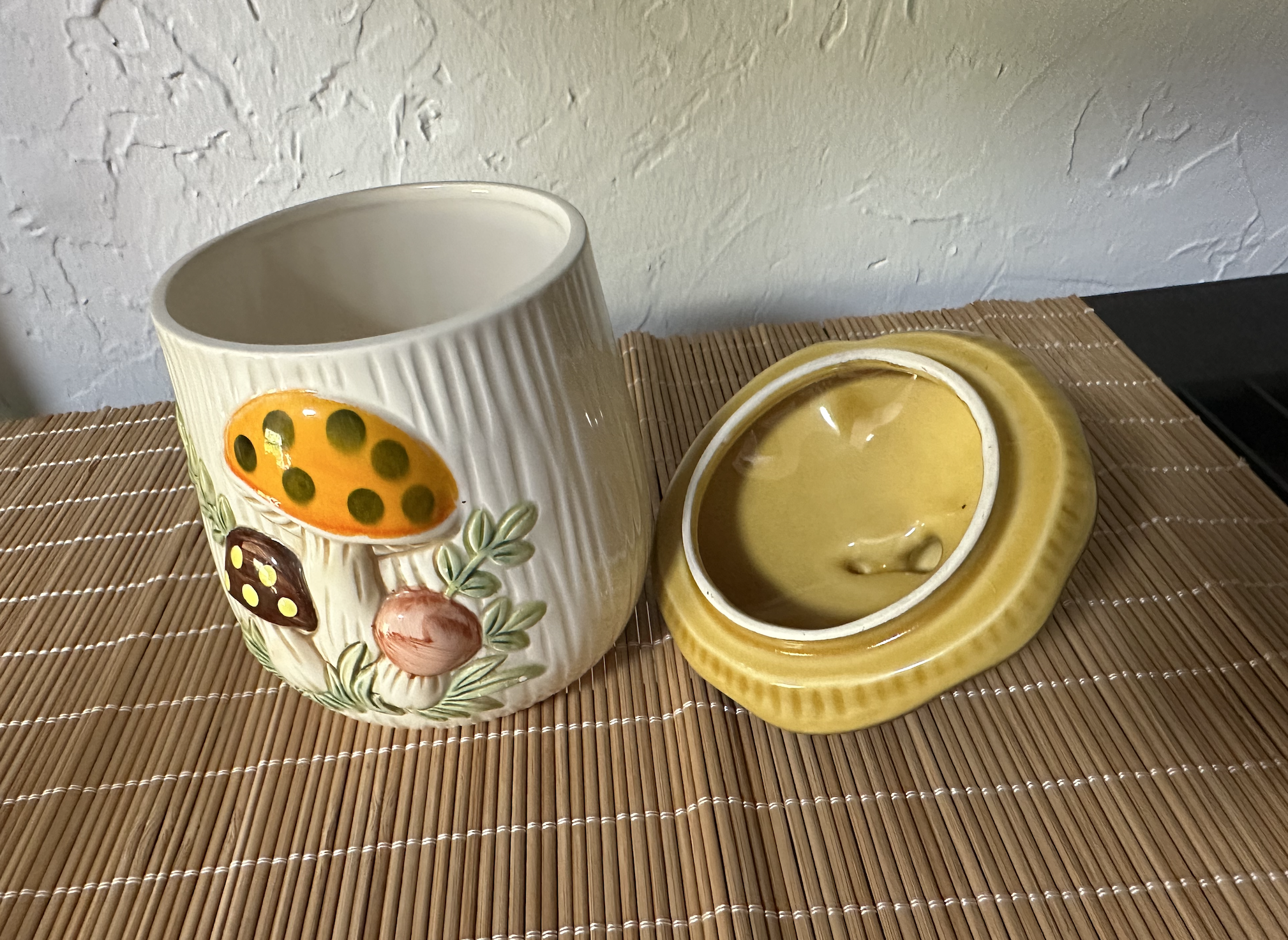
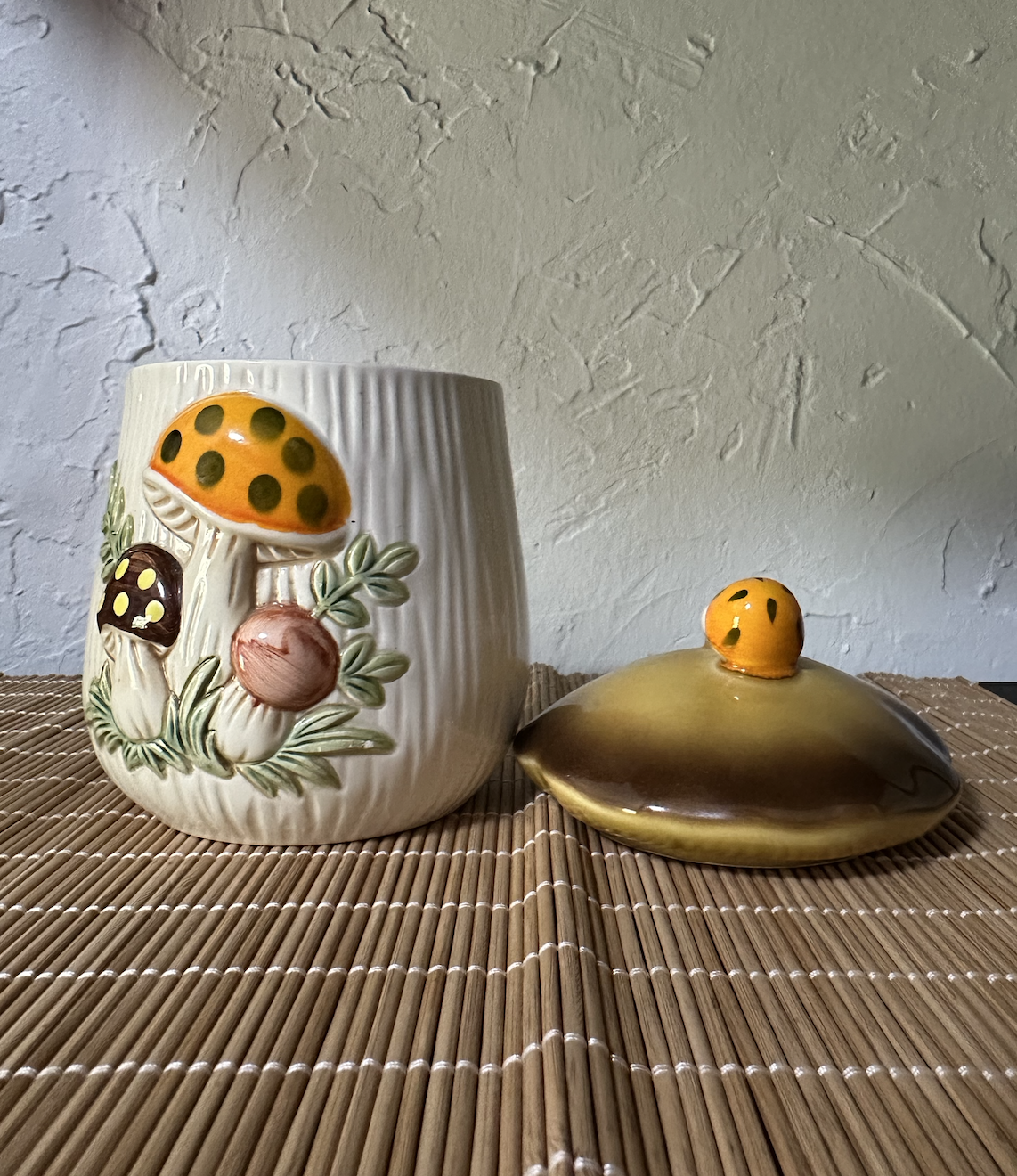

I have a few others that are similar to these but a different color, not sure if its like the handmade pottery ones that people bought and painted themselves.
This was my “holy grail” collectable, I got a whole set at auction!! Iwas so excited! However I’m miffed at myself because after following Tamara for over 10yrs I let my fascination with these Merry Mushrooms override my thinking that these could be toxic. Though I am super careful it didn’t occur to me! I feel ridiculous now! Lol
Wow, I didn’t have the canister set but I had the enameled tea kettle for years. It that design and blue enamel on the inside. It eventually chipped and bought another enameled tea kettle and used for years. Again this had chipping and I got rid of it. I’ve had a stainless tea kettle for at least 20 yrs now. I feel safer but all that was in my child bearing years. Scary!!. Why are enameled tea kettles allowed at all anymore? Thank you for all your advocacy work.
I’ve been using this jar to store by individually wrapped tea bags in. It was handed down to me from my grandma. I am horrified I used this even when I was pregnant. It will be going in the trash. Thank you so much for testing this and sharing your findings (and for all of your other work I’m just now discovering).
I have a set of mushroom canisters with the tea cups, sugar bowl, and butter holder. Not by Sears, but Arnel’s. I think the Arnel ones are nicer than the Sears ones. I’ve never used them for anything but display.